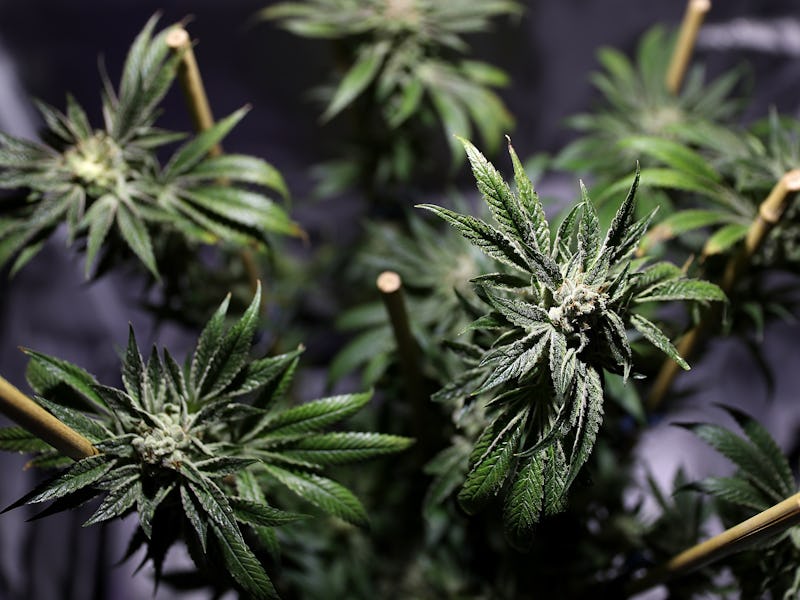Scientists Plead for More Weed to Study as Lay People Get High on Legalized Bud
Forced by the government to buy from the worst pot dealer in America, scientists are finally protesting.

Marijuana legalization has led to a growing pot private sector, but scientists looking to study the drug are stuck in the old paradigm. In a letter published in the journal Science this week, researchers from the University of New Mexico condemned the U.S. government for stubbornly standing in the way of important research on the drug. Specifically, they called the government out for refusing to share the dankest nugs.
In the letter, Sarah Stith, Ph.D., and Jacob Vigil, Ph.D. outlined the frustrations of marijuana-studying scientists. Foremost among them is this: While there has been a significant increase in the amount of academic research on the drug in the last few years, it’s not nearly commensurate with the drug’s staggering potential as a treatment for chronic pain, cancer, and even post-traumatic stress disorder, or with how prevalent it has become.
U.S. government’s research policies, Stith and Vigil write, are making it impossible to scale up weed research appropriately:
To conduct research on Cannabis, scientists must submit to a lengthy and arduous application process, often lasting for years. The research requires permission from multiple governmental agencies, including some with expressly stated opposition to any therapeutic uses, such as the Drug Enforcement Agency.
But paperwork isn’t even the biggest issue. The “biggest obstacle” to cannabis research — one all potheads can empathize with — is simply getting good weed. Currently, federal policy dictates that all weed used in research has to be purchased through the National Institute on Drug Abuse, which the authors point out is notorious for selling crappy pot. The highest THC concentration the researchers can get their hands on through NIDA is 12.4 percent; in contrast, the users in Colorado can easily get strains containing, on average, 18.7 percent; some varieties even register at 35 percent.
As THC is thought to be the most important active ingredient in marijuana (although some researchers have begun to study cannabidiol, or CBD, for its role in controlling seizures), research, naturally, requires the compound to be present in significant amounts.
It’s the government itself that has the most to lose by upholding its stubborn drug laws, the researchers point out. The drug’s potential benefits to the health care system could reduce medical costs in the future, and knowing more about its intoxication mechanisms and long-term effects will only make using the drug safe for everyone. But as long as the government insists on putting its most marijuana-hating agency in charge of selling it to scientists, the likelihood that the drug will get the chance to do more good than harm remains, unfortunately, low.
“Most important,” the authors write, “many severely ill patients may suffer unnecessarily because no one knows the true risks and benefits of consuming Cannabis sativa.”